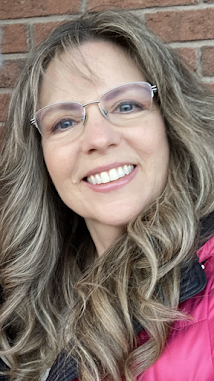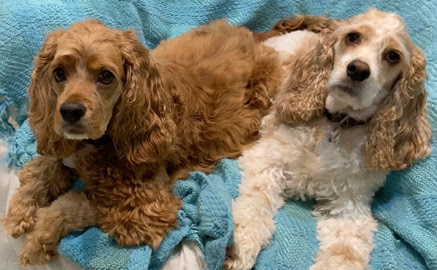I started with E70 and used the brush tip on my Copic Sketch markers to make a lot of strokes all over the donkey. I made sure I laid down the strokes in the direction that I figured the fur would naturally appear on the coat of a donkey. I avoided coloring in the areas that I would later want to appear as highlights. I chose to have my light coming from above and to the right of the paper, and so I imagined where the highlights would fall on this little equine and left those spots bare.

I repeated this same technique with the next darkest shade of brown in the same color family, E71. I was not trying to blend the colors seamlessly; with fur, I want to have some texture showing and so lines of demarcation are desired, not to be blended out. I also did not cover the entire first layer of color, but left a lot of places for it to show through. This is essential if you want to show depth in your work. I might add that the brush technique is a little tricky; you have to nearly float the marker above your work, and flick your wrist, barely letting the tip touch the paper. The reason for this is because if you press the tip to the paper firmly, the stroke will leave a thick swath of color. If we had a choice of a narrower brush tip, that would not be a problem, but all Copic brush tips are very large in comparison with small stamped images. You can practice this "feathering" technique on a scrap first if you want to get the hang of it before trying it on a stamped image.

I repeated this same technique again, following the direction of the previous layers, and using E74. With this shade I am concentrating on the areas that would be in shadow, remembering my light is coming from above and to the right of the image. If you look closely under his belly and under the cheek line, you will see that I did not carry this dark shade right to the edge of the belly/cheek line, but left a tiny portion along the bottom edge where I did not shade it. This is a trick for making something appear 3 dimensional. There will sometimes be a portion of an object that has a small amount of reflected light bouncing off the ground or other object close by that shows up on this outer edge. If you can add that into your coloring, your images will really come to life.
I also did this on his legs, and it shows up the most on his back legs, where I put E74 mostly down the middle of the legs.

I added E77 to the areas where I had put E74 using the same feathering technique. This time I went over the areas that I thought would be darkest with many strokes, until I was happy with how deep the shade was.

I had put E70, 71 and 74 in the tail, and so I had to do the same for the mane and forelock. I left a lot of the area white though because I wanted to add in a different shade of brown just to give my donkey more variety in color. Once I had layered in some feather strokes of the E70's, I reached for E53 and just colored over the entire mane, forelock and tail tuft.

I like adding a variety of colors when I do brown fur, and just to punch up the image and give it more life, I decided to add a couple of purple-ish shades. I went over the fur sparingly with these two shades: BV00 and BV23. Key word, "sparingly". I didn't want a purple donkey, but I did want hints of purple here and there.

Next I concentrated on his muzzle and inside his ear that I wanted to do in a pink shade. I started with R02 but found it a bit too orange-y, so I went over most of the muzzle with RV11, leaving the far left of it untouched with this shade. Again, I used the feathering technique to blend these two shades.

For the hooves I started with E53, leaving an area for a highlight, and then E55 for the darker areas.

I darkened the hooves even more using E44. If I had stopped there, it would have been good. However, I thought the brown looked too "orange-y".

Knowing that color opposites create a grey and tone each other down when used overtop of one another, I thought that a blue tone would make the brown less orange-y. So I reached for my B34. Hmmm... turned out to be a mistake, look what happened:

Aaak! Green hooves!! Not the time to panic though. Time to use my knowledge of how colors work together. Ok, so the hooves were too green. Red tones down green, so, I reached for the brown I had started with on the donkey's fur, E70 and toned the green down. I also used E74 as well. See how you can color correct by using color opposites? I almost never give up on a picture I'm coloring when I make a mistake. There is almost always a way to fix it!

Next I used a blender pen and went over the highlights on the hooves, feathering the tip of the blender pen from the lightest part of the highlight and going slightly into the colored areas, but not too much! I also created a shadow on the muzzle with BV33.

The next step was to create a ground for the little guy. I thought about where the shadow would fall with the light source above and to the right of the animal.
I started with E53 to create the entire area, and then gradually added darker colors. I used E70, E71, C2 and C4 and instead of feathering, I made tiny dots of color to represent rocks and sand.

Then using the blender pen, I made little swirly motions around the whole perimeter of the ground to blur the line and soften it. To make the ground look pebbly, I lightly touched the tip of the brush of the blender pen to the ground and held it for three seconds. That moves the color out of the way slightly, leaving a circular pattern. I repeated this all over to make the rocky texture.

Some might stop here and decide they like it as is. I almost did, but then, I decided instead to experiment a little further! For one thing, I grabbed E47, which is the darkest brown I have and deepened the dark shadows just a tad more.

I also took some blending solution and dabbed it on an old terry cloth rag, then pressed the damp rag onto the fur areas I had colored. I had to carefully avoid the hooves and ground. This is the final effect, and I'm glad I experimented, as I like the result:

My image is now ready to incorporate into a project! Thanks for looking and taking the time to read through this tutorial. I hope it was clearly presented.
Blessings!














Holy donkey! Chrissy, I could have used this for my kitty cat image! Thanks so much for this tutorial. I just finished a copics class. Why I didn't think of using the feathering on my kitty, I'll never know!
ReplyDeleteI am going to save this tutorial for my copic notebook!
Thanks so much! It is GREAT!
wow! your coloring is amazing!!
ReplyDeleteThis is a great tutorial Crissy! Thanks so much for sharing it! I have trouble leaving any hightlights in my images, so this helps me see 'the light'! :) hehehehe
ReplyDeletei like youre image,how you did it.gr. anja
ReplyDeleteOMGosh!!! Thank-you so much for an amazingly informative tutorial, it's crystal clear with great photos. It definately gives me the confidence to try it out very soon! Thank-you x
ReplyDeleteHugs Sarah-Jane xx
What an awesome tutorial, thank you so much for all your hard work in presenting this wonderful information. I'm going to have to try this, thank you!
ReplyDeleteBig Hugs, Christine :)
Wow! That's all I can say!! I don't have Copics so I can't try it out...not that I would ever be able to achieve these results...but you always WOW me!!
ReplyDelete~Lacey
Oh my, what a wonderful tutorial Crissy, thank you so much!
ReplyDeleteHugs, Kelly
Crissy, thanks for taking the time to show how you did this. It's really a wonderful look, and it's almost like looking over your shoulder watching you color!
ReplyDeleteThank you for the great tutorial! Your work is fabulous!!
ReplyDeleteTake care and STAY POSITIVE!
What a Totally Fabulous tutorial Crissy!!...I'll be coming back to it again and again!!..Thanks so much for sharing!!..Hugs, Ila
ReplyDeleteYou are having way too much fun! What a great tutorial. I told you that you would rock those markers Lady!!!
ReplyDeleteGreat tutorial! I LOVE the texture and depth, it really does look 3D on the pics! I wish I had copics to try this with! Well maybe someday! He is so cute!
ReplyDeleteWOW! Amazing and wonderful tutorial! Thanks so much for the step by step...you work is amazing!
ReplyDeleteFabulous tip again about correcting mistakes with colour opposites. Thank you for sharing your knowledge.
ReplyDeleteYour finished donkey looks so strokeable.
Luv'n'Stuff
Max
xx
Wow - your donkey looks so lifelike thanks for sharing the technique - I am going to be trying this very soon.
ReplyDeleteBeccy x
Fantastic tutorial!
ReplyDeleteErin x